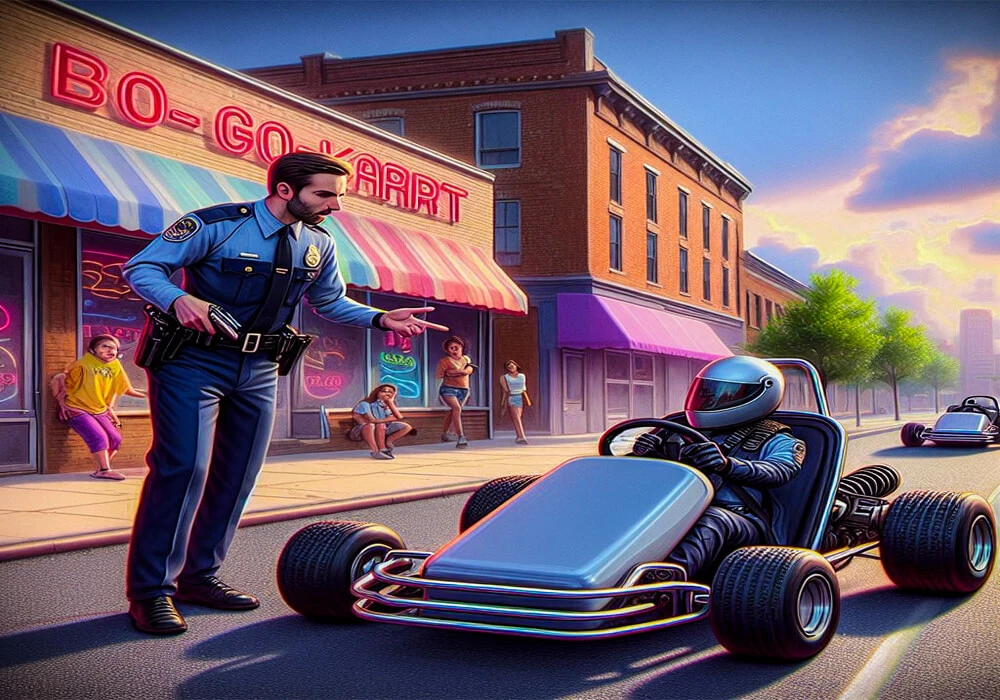Do Go Karts Have Seat Belts?
Go-karting is a thrilling activity enjoyed by people of all ages. Whether it’s for fun at an amusement park or in the context of competitive racing, safety is a critical consideration.
One question often arises: Do go-karts have seat belts? Go-karts may have seat belts depending on their type and use; recreational and off-road typically include them, professional often don’t.
Types of Go-Karts and Their Seat Belt Usage

Understanding the different types of go-karts helps explain why some have seat belts and others do not.
1. Recreational Go-Karts
Recreational go-karts, found in family fun centers and amusement parks, typically come with seat belts. These karts are designed for safety first, as they are often used by children and novices. The inclusion of seat belts in these karts helps ensure that the drivers remain securely in their seats, reducing the risk of injury from sudden stops or minor collisions.
2. Concession Go-Karts
Similar to recreational go-karts, concession go-karts used for rentals also generally include seat belts. These karts are often found at public tracks and amusement parks, where safety regulations mandate the use of seat belts to protect drivers. Since these karts are frequently used by inexperienced drivers, seat belts help minimize the risk of injury.
3. Off-Road Go-Karts
Off-road go-karts, such as dune buggies and all-terrain vehicles, usually come equipped with seat belts. The unpredictable and rough terrain they navigate increases the likelihood of flips and rollovers, making seat belts essential for keeping drivers and passengers secure during these events.
4. DIY Go-Karts
Homemade or DIY go-karts might or might not have seat belts, depending on the builder’s preferences. Some enthusiasts incorporate safety features like seat belts, while others might prioritize other aspects of the build. The decision often depends on how the go-kart will be used and the builder’s commitment to safety.
5. Professional Racing Go-Karts
Surprisingly, professional racing go-karts often lack seat belts. In competitive racing, the design prioritizes performance and speed. Many professional racers believe that being ejected from the kart in a crash is safer than being restrained by a seat belt. The absence of seat belts allows drivers to be thrown clear of the kart, potentially reducing the risk of injury in high-speed collisions.
Safety Considerations
Importance of Safety in Go-Karts
Safety in go-karting encompasses more than just helmets and protective gear; it also includes the decision of whether to install seat belts. While seat belts are an integral safety feature in many types of go-karts, their usage in professional racing karts remains a topic of debate.
Pros and Cons of Seat Belts in Go-Karts
Advantages
- Security: Seat belts provide a sense of security and help prevent injuries from minor mishaps or sudden stops.
- Off-Road Safety: They are particularly beneficial in off-road scenarios where the terrain is unpredictable, reducing the risk of ejection during a rollover.
Disadvantages
- Potential Hazards: In serious accidents, seat belts can pose a danger. For instance, a driver might be trapped in a flipped kart or unable to escape quickly in case of a fire.
- Professional Preferences: In professional racing, the belief that it’s safer to be ejected than to be strapped in during a crash influences the decision to forgo seat belts.
Legal Aspects

Regulations and Guidelines
Seat belt regulations for go-karts vary based on location and the type of karting activity. Recreational and concession go-karts, especially those at amusement parks, are often required by law to have seat belts. However, off-road and DIY go-karts may not face such stringent regulations. Always check local laws and guidelines to ensure compliance.
Types of Seat Belts in Go-Karts
Different types of seat belts are used in go-karts, tailored to the kart’s use.
- Lap Belts: Common in recreational and concession go-karts, providing basic restraint.
- Harness Systems: Found in off-road and some competitive karts, offering more secure restraints.
- Complex Safety Restraints: Used in professional racing for enhanced protection.
Each type of seat belt offers varying levels of security, with choices influenced by safety, comfort, and ease of escape in emergencies.
FAQs
What other safety equipment is essential when driving a go-kart?
Besides seat belts, essential safety gear includes helmets, neck braces, rib protectors, specially designed suits, gloves, balaclavas, and protective footwear. These items collectively enhance safety during go-karting.
Is there a specific seat belt design recommended for go-karts?
The design of the seat belt depends on the type of go-kart and its use. Recreational go-karts often use simple lap belts, while off-road and professional racing go-karts may use more complex harness systems. It’s crucial that the seat belt does not hinder the driver’s ability to exit quickly in an emergency.
Are there specific laws governing go-karting in the UK?
Yes, the Health and Safety Executive (HSE) in the UK provides guidelines on safe go-karting, covering aspects like track design, safety barriers, kart maintenance, and driver equipment. Seat belt regulations can vary depending on the type of karting activity.
Is there a standard transmission system for go-karts?
Go-karts do not have a standard transmission system. The type used depends on the model and design of the go-kart. The transmission’s role is crucial in transferring power from the engine to the rear axle, impacting the kart’s performance.
Conclusion
The presence of seat belts in go-karts varies based on the type and intended use of the kart. While recreational and off-road go-karts frequently incorporate seat belts for added safety, professional racing karts often do not, prioritizing driver ejection in the event of a crash. Understanding these differences is crucial for anyone involved in go-karting to make informed decisions about their safety.

Jason Berry is a passionate enthusiast of all things go-karting. With years of experience in the industry, he has dedicated himself to exploring and uncovering the world of go-karts, from the adrenaline-pumping races to the intricacies of design and performance. Jason’s expertise extends beyond just the tracks; he delves into the mechanics, the technology, and the community that surrounds these thrilling machines. Through his articles and insights, Jason aims to share his knowledge and help fellow enthusiasts make informed decisions about their go-karting adventures. Whether you’re a seasoned racer or a newcomer to the sport, Jason’s expertise and passion are sure to rev up your excitement for the best go-karts on the market.

